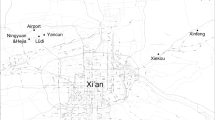Abstract
Numerous iron objects from the medieval sites in Mongolia were metallographically examined for a comparative study intending to probe indigenous and foreign impacts on the establishment of local iron tradition. The artifact assemblage includes iron and cast iron objects recovered during the recent Mongol-American joint expedition to sites in the eastern part of Mongolia. Cast iron objects, dominating the assemblage, were mostly in the form of small fragments or square bars, which would be of little value if they were to be used for casting. However, their greatly varying microstructures reveal evidence of various small-scale steelmaking processes involving cast iron. This observation suggests that most of them were prepared as a practical means to procure steel, a highly valued commodity particularly among nomadic communities. In contrast, other iron objects with microstructures characteristic of inferior bloomery products constituted only a minor part of the assemblage. We discuss the results of our analysis from a comparative perspective and propose that this unique ironworking tradition discovered in eastern Mongolia reflects the distinctive geographical and sociopolitical background of the nomadic groups and periods concerned.



Similar content being viewed by others
References
Honeychurch W (2014) Alternative complexities: the archaeology of pastoral nomadic states. J Archaeol Res 22:277–326
Honeychurch W (2015) Inner Asia and the spatial politics of empire: archaeology, mobility, and culture contact. Springer, New York
Osawa M (2005) One of the forms of iron producing in the mongol empire obtained from forge-related objects found at Avraga site. Approach based on metallurgical study, in: Shimpei Kato (Ed.), The Avraga site. Preliminary report of the excavations of the palace of Genghis Khan in Mongolia 2001–2004. Kokugakuin University, pp. 45–62
Park JS (2015) The implication of varying 14C concentrations in carbon samples extracted from Mongolian iron objects of the Mongol period. J Archaeol Sci 63:59–64
Park JS, Reichert S (2015) Technological tradition of the Mongol Empire as inferred from bloomery and cast iron objects excavated in Karakorum. J Archaeol Sci 53:49–60
Park JS, Chunag A, Gelegdorj E (2008) A technological transition in Mongolia evident in microstructure, chemical composition and radiocarbon age of cast iron artifacts. J Archaeol Sci 35:2465–2470
Park JS, Eregzen G, Yeruul-Erdene C (2010) Technological traditions inferred from iron artefacts of the Xiongnu Empire in Mongolia. J Archaeol Sci 37:2689–2697
Park JS, Honeychurch W, Chunag A (2011) Ancient bronze technology and nomadic communities of the middle Gobi Desert, Mongolia. J Archaeol Sci 38:805–817
Park JS, Erdenebaatar D, Eregzen G (2015) Evolution of Mongolian bronze technology with the rise of the Xiongnu State. Archaeol Anthropol Sci. https://doi.org/10.1007/s12520-015-0304-x
Park JS, Honeychurch W, Chunag A (2016) Complicating the frontier: armaments, fortifications, and identities beyond the Great Wall. J Archaeol Sci Rep 6:475–487
Park JS, Erdenebaatar D, Eregzen G (2017) The implication of the metallurgical traditions associated with Chinese style wagons from the royal Xiongnu tomb at Golmod 2 in Mongolia. Archaeol Anthropol Sci. https://doi.org/10.1007/s12520-017-0476-7
Perlee Kh (1959) A study on the Khitan and the Khitan-Mongol relationship. Ulaanbaatar (in Mongolian)
Perlee Kh (1961) A brief study on Mongolian towns in prehistoric and historical time. Ulaanbaatar (in Mongolian)
Perlee Kh (2001) A study on the metallurgical work of Mongolian nomads. In: Kh. Perlee (Ed.), Collection of Perlee’s research papers, vol. 2. Ulaanbaatar, pp. 55-293 (in Mongolian)
Pohl E, Mönkhbayar L, Ahrens B et al (2012) Production sites in Karakorum and its environment: a new archaeological project in the Orkhon Valley, Mongolia. Silk Road 10:49–65
Rogers JD (2012) Inner Asian states and empires: theories, data, and synthesis. J Archaeol Res 20:205–256
Rostoker W, Bronson B (1990) Pre-industrial iron: its technology and ethnology. Archaeomaterials monograph 1. University Museum Publications, Philadelphia
Shiraishi N, Tsogtbaatar B (2009) A preliminary report on the Japanese-Mongolian joint archaeological excavation at Avraga site: the Great Ordu of Chinggis Khan, in: Bemmann, J., Parzinger, H., Pohl, E., Tseveendorzh, D. (Eds.), Current archaeological research in Mongolia. Papers from the First International conference on “Archaeological Research in Mongolia” held in Ulaanbaatar, August 19th–23rd, 2007. Bonn Contributions to Asian Archaeology 4. Vor- und Frühgeschichtliche Archäologie, Rheinische Friedrich-Wilhelms-Universität, Bonn, pp. 549–562
Sinopoli C (1994) The archaeology of empires. Annu Rev Anthropol 23:159–180
Verhoeven JD (1975) Fundamentals of physical metallurgy. Wiley, New York
Wagner DB (1996) Iron and steel in ancient China. E.J. Brill, Leiden
Wagner DB (2008) Science and civilization in China. Joseph Needham. Volume 5. Chemistry and chemical technology part 11: ferrous metallurgy. Cambridge University Press, Cambridge
Acknowledgements
The DMS project would not have been possible without the generous collaboration of the Institute of History and Archeology, Mongolian Academy of Sciences. The analysis and research presented was financially supported by the National Research Foundation of Korea (NRF-2017R1A2B4002082) and by the US National Endowment for the Humanities (Grant RZ-249831-16). We express our sincere gratitude to the families in Delgerkhaan Uul whose hospitality and knowledge help us immensely.
Author information
Authors and Affiliations
Corresponding author
Rights and permissions
About this article
Cite this article
Park, JS., Honeychurch, W. & Chunag, A. Iron technology and medieval nomadic communities of East Mongolia. Archaeol Anthropol Sci 11, 555–565 (2019). https://doi.org/10.1007/s12520-017-0553-y
Received:
Accepted:
Published:
Issue Date:
DOI: https://doi.org/10.1007/s12520-017-0553-y




